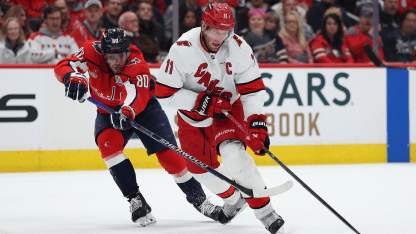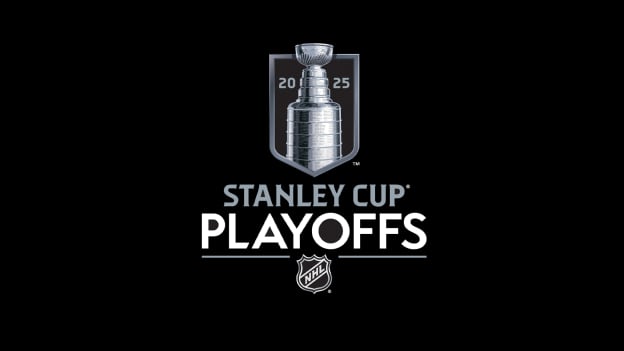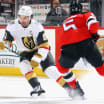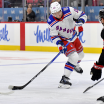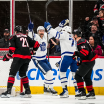2. Hurricanes’ offensive zone time percentage
Per NHL EDGE stats, the Hurricanes lead the League in offensive zone time percentage at all strengths (45.1 percent) during the postseason, the percentage of time that the puck spends in the offensive zone while the game clock is running. Carolina also led the League in offensive zone time percentage during the regular season (47.2 percent). The Capitals, in terms of offensive zone time percentage during the regular season (40.7 percent), ranked below the League average (42.2 percent), Washington ranks ninth of 16 teams in offensive zone time percentage (42.3 percent) during the postseason.
This postseason, the Hurricanes have three of the top 10 NHL players in offensive zone time percentage at all strengths: defenseman Shayne Gostisbehere (51.8 percent; second) and forwards Andrei Svechnikov (50.6 percent; fourth) and Jesperi Kotkaniemi (48.6 percent; tied for eighth). Carolina also has three of the League's top 10 in offensive zone time percentage on the power play during the playoffs: forwards Seth Jarvis (66.5 percent; fifth) and Sebastian Aho (65.6 percent; ninth), followed by Gostisbehere (65.2 percent; 10th).
Carolina, which led the NHL in 5-on-5 shot attempts percentage (58.5 percent) for the third straight regular season, is tied for fourth in that category this postseason (55.8 percent; Washington is tied for 12th at 44.2 percent). While the Capitals have a better 5-on-5 shooting percentage (9.7 percent; seventh) so far in the playoffs compared to the Hurricanes (6.7 percent; 13th), Carolina was 2-1-1 against Washington during the regular season and outscored them 14-10, including 9-6 at 5-on-5.
3. Thompson’s midrange save percentage
Entering the Eastern Conference First Round series against the Montreal Canadiens, the Capitals had injury concerns surrounding No. 1 goalie Logan Thompson and top-six forward Aliaksei Protas. Thompson, despite an injury scare during the series, has played in all five playoff games for Washington so far, going 4-1 with a .923 save percentage (second among goalies who have played multiple games behind the Hurricanes' Frederik Andersen at .936 in four games); Protas returned for the series-clinching Game 5 win against the Canadiens. With an injury concern surrounding Andersen entering the second round, Thompson gives the Capitals an advantage compared to the backup options for Carolina (Pyotr Kochetkov, Spencer Martin).
Thompson, despite not being named a Vezina Trophy finalist, has been one of the breakout players across the NHL this season and helped the Capitals win the Eastern Conference after they were a fringe playoff team last season. The 28-year-old, who was acquired in a trade with the Vegas Golden Knights during the offseason, ranked second in winning percentage (72.09; 31 wins in 43 games; minimum 20 games) behind Winnipeg Jets goalie Connor Hellebuyck (74.06; 47 wins in 63 games), and among the 30 goalies who played at least 40 games, was tied for eighth in even-strength save percentage (.918).
Per NHL EDGE stats, Thompson has excelled on his opponents’ shots on goal from midrange areas during the postseason; he has faced the fifth-most midrange shots on goal (40), ranks third in midrange saves (39) and second in midrange save percentage (.975; behind Andersen’s 1.000). This will be a crucial category with Thompson set to face the Hurricanes, who scored seven midrange goals during the first round against the New Jersey Devils, tied with the Colorado Avalanche for the most of any team through five playoff games.
---
EDGE stats team comparison: WSH vs. CAR
